


Something is surely wrong if feedback makes your employee doubt their career path and throw leave notices at you. Feedback may look plain, but actually, it is a powerful tool that can boost your employees’ professional growth. Let’s join Purrweb's project managers in analyzing feedback traps and pitfalls.

Feedback equals facts. You provide facts to help a person change their behavior. They have nothing to do with emotions. Thus, there is no such thing as positive or negative feedback.
If a team fails a deadline because their developer hasn’t fulfilled the sprint tasks, don’t reprove them. You need to find out what is wrong, help deal with the reasons, and avoid future incidents. It’s beneficial for both the specialist and the team.
The goal is to enable an employee to see the rights and wrongs of their decisions. Then, help them puzzle out how to do better next time. In this case, you provide feedback not to label your teammates as good or bad but to make it clear why they have done poorly.
How do you put this into practice?
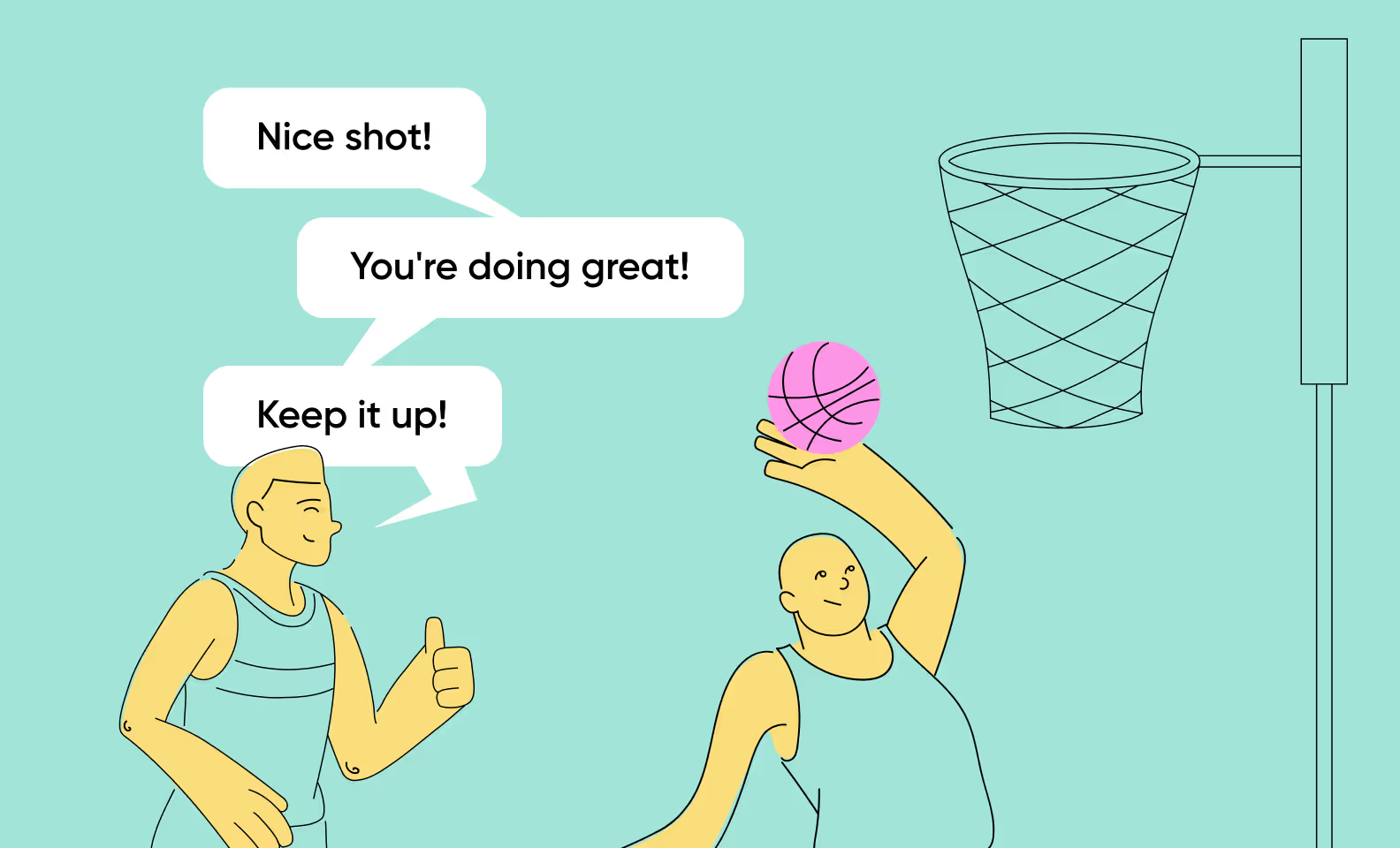
You use it to reinforce the progress. The key message is: “That was a good job! Keep it up!”
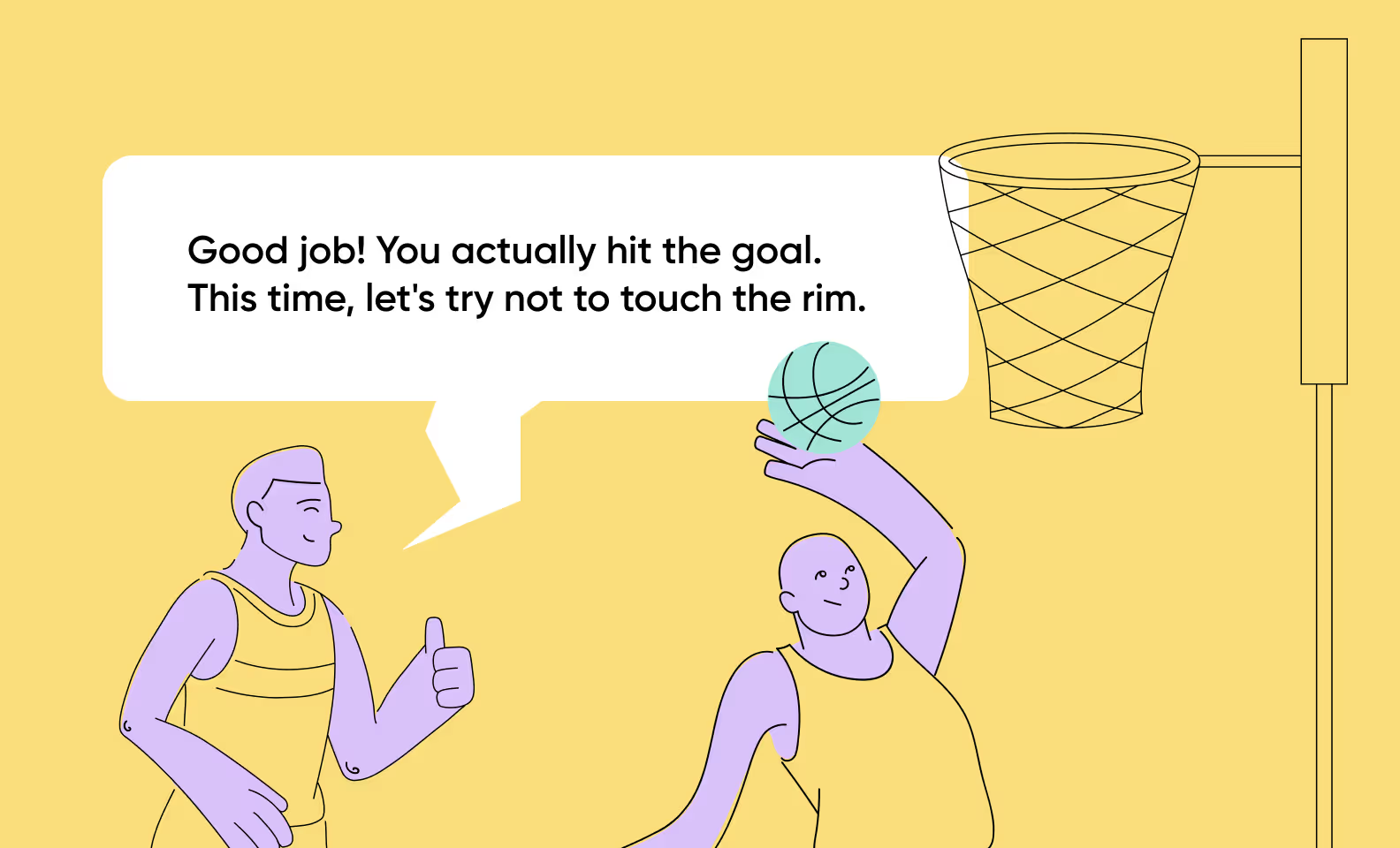
You need it to help your teammate analyze their strengths and weaknesses. Here you say: you manage these tasks well but need to do better with that stuff.

You give feedback to make things right. Your main message in this case is: “That was no good. Let’s see how to improve this.”

You can give feedback when your employee tries as hard as they can but don’t get what they have aimed for. It’s crucial to help them overcome their frustration: highlight their achievements and show them how to succeed.
You need to know how to give any kind of feedback the right way. This means you should use facts only and avoid making your feedback personal. The employee needs to understand what to correct instead of feeling the urge to leave the team for good.
We will share 4 basic feedback methods, and the 5th — coaching — will be the cherry on top.
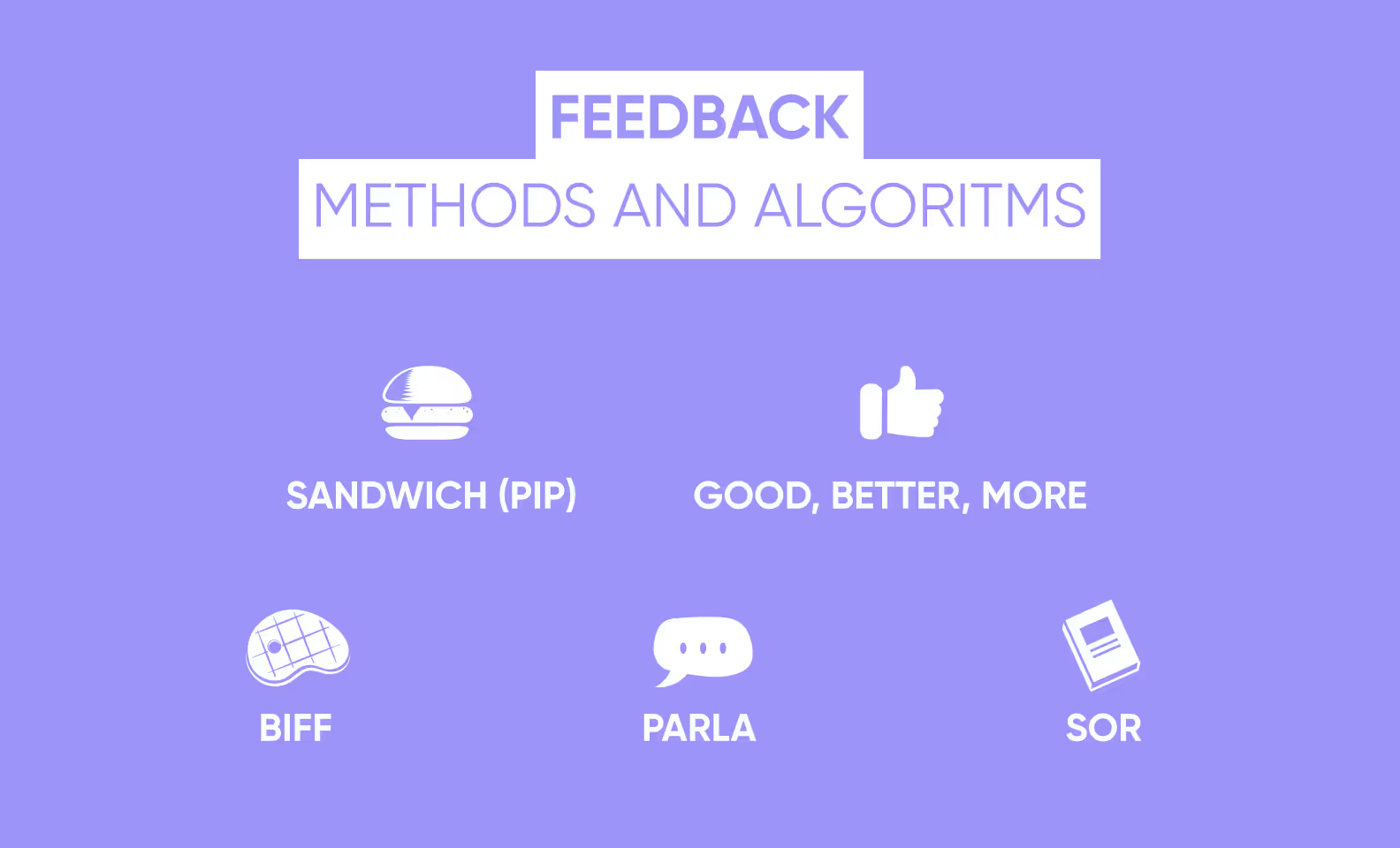
These are the methods we’re going to discuss
It’s the most popular method. It is commonly believed that you hide your negative feedback behind praises at the beginning and the end.
Our sandwich works another way. Don’t use nice things to conceal the negative. Give the overall feedback about the well and poorly-managed tasks. The positive moments at the top of our sandwich are, in fact, valuable. They aren’t a plain disguise for nasty critics. They are the topics you truly wish to discuss.
Stage 1. Praise. Show that the success was not a mere stroke of luck. Your employee did their best to achieve that.
“John, your rates are adorable in this sprint. That’s awesome! I know you had to experiment on them a lot. That’s why your rates are quick and precise. This is one of the vital indicators for future growth.”
Stage 2. Analysis. Discuss what went wrong and try to help manage the stuff — come up with a plan to improve the situation. Thus, you correct and motivate.
“At the same time, I noticed you have trouble optimizing website efficiency. Pay attention to this, please. In this sprint, the page load performance was reduced by 10%. It’s a crucial indicator for our client. Let’s discuss what to do and who to turn to so you manage better in the next sprint.”
Stage 3. Future plan discussion. It’s vital to talk about personal motivation here.
“Great! We have agreed on the plan. Let’s move on. I’m sure you’re capable of dealing with this task. Note: as soon as your expertise grows, we will discuss your future steps, duties, and therefore, your new perks. I’m here if you need help.”

If you want the scheme to work, balance the reinforcing and developing parts. Don’t turn it into a “your performance is poor, and you have ruined your project, but haven’t been late this month” kind of feedback.
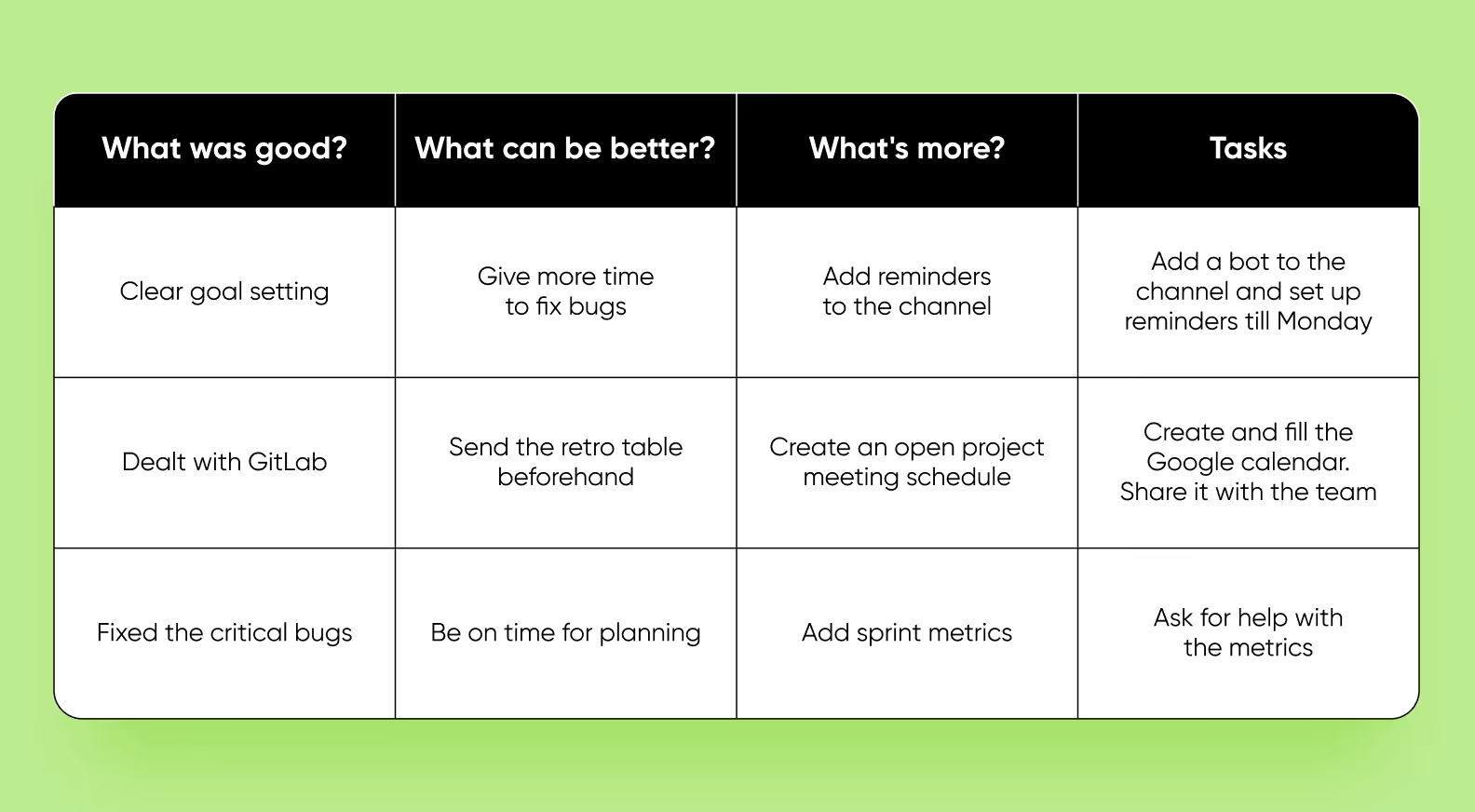
Stage 1. Good. Analyze the stuff to praise for. As you mention achievements, you help your employees acknowledge their success. You show what actions made them win and inspire them to go on.
“In the last sprint, you set all the goals clearly and on time. I’m proud of you, guys.”
Stage 2. Better. Find out what can be done better.
“Let’s send the retro table 2-3 days before the retro instead of just one day. This way, we’ll have more time to analyze the results and fill in the table properly.”
Stage 3. More. Agree on what you can add to make things better:
“Let’s add reminders to the channels to keep the vital moments in mind.”
To take a step further, you can set a clear task for your employee. For example, tell them to configure a reminder bot by Monday.
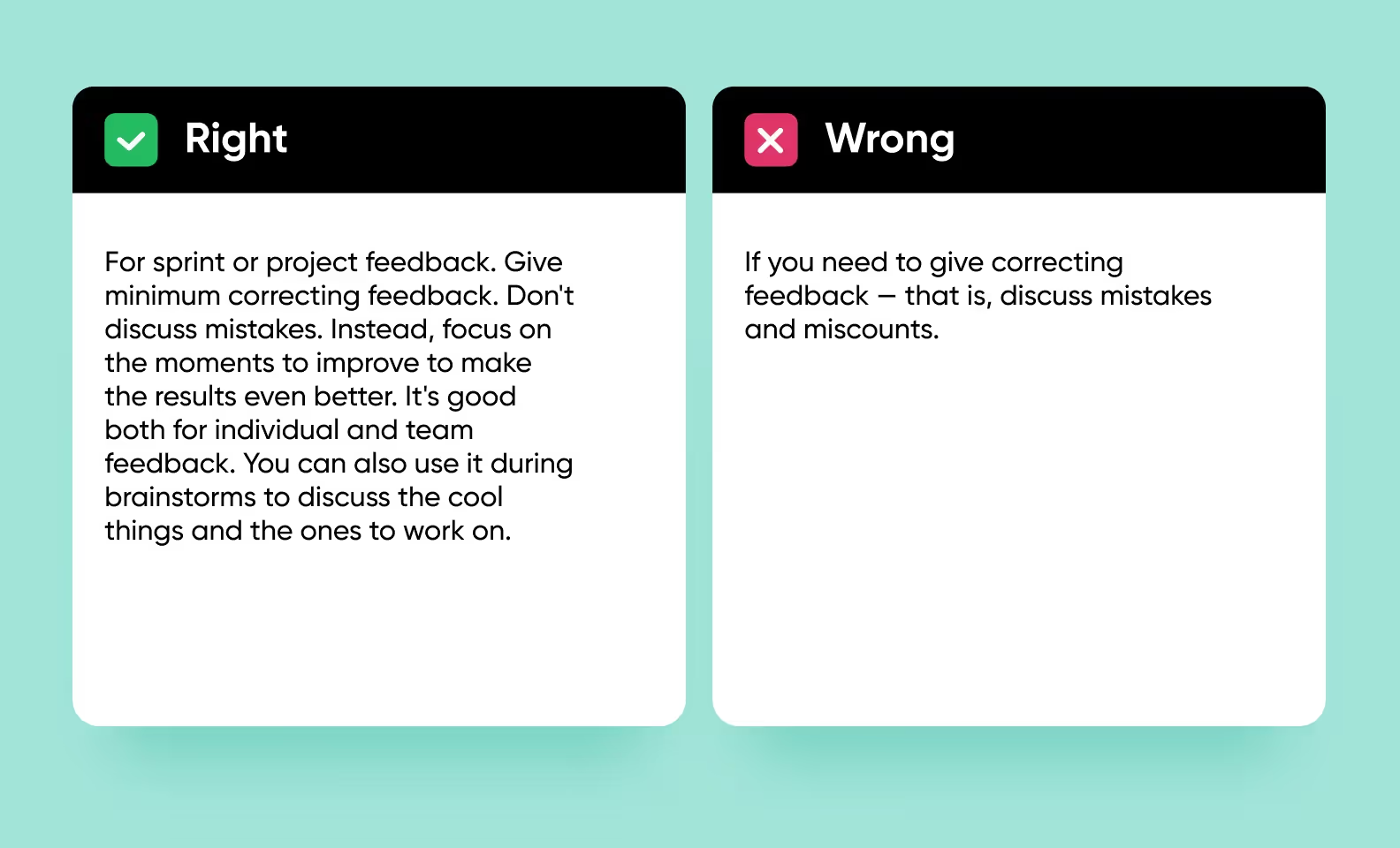

Stage 1. Behavior. Discuss an employee’s behavior — what they did wrong and their mistakes. Talk about specific things instead of general ones. For example, replace the you keep being late with the you were late 5 times last month phrase.
“Helen, I have noticed that, as I was away, you assigned two tasks to the team just 2 days before the end of the sprint.”
Stage 2. Impact. Explain the consequences of the inappropriate behavior. Use facts and figures. Don’t say: “It’s wrong to be late.” Say: “Over the last month you were late so often that you missed a whole hour and a half in total. This affected the team’s efficiency.”
“As a result, the team got distracted. The guys started new tasks instead of completing the current ones. So, we couldn’t reach the goals.”
Stage 3. Feelings. Share what you feel as you see such an attitude or general regress. For example: “Your tardiness upsets me. It makes me feel you have no respect for the entire team.”
“I’m disappointed you don’t fulfill our agreements, and the team loses motivation.”
Note: Talk about your feelings after discussing facts, and don’t make this personal. We share our feelings, but we never blame or judge.
Stage 4. Future. Discuss the future strategy. Don’t forget to ask what your employee will do to change their behavior to reach better results.
“Let’s discuss what you are ready to do to avoid such situations in the future.”
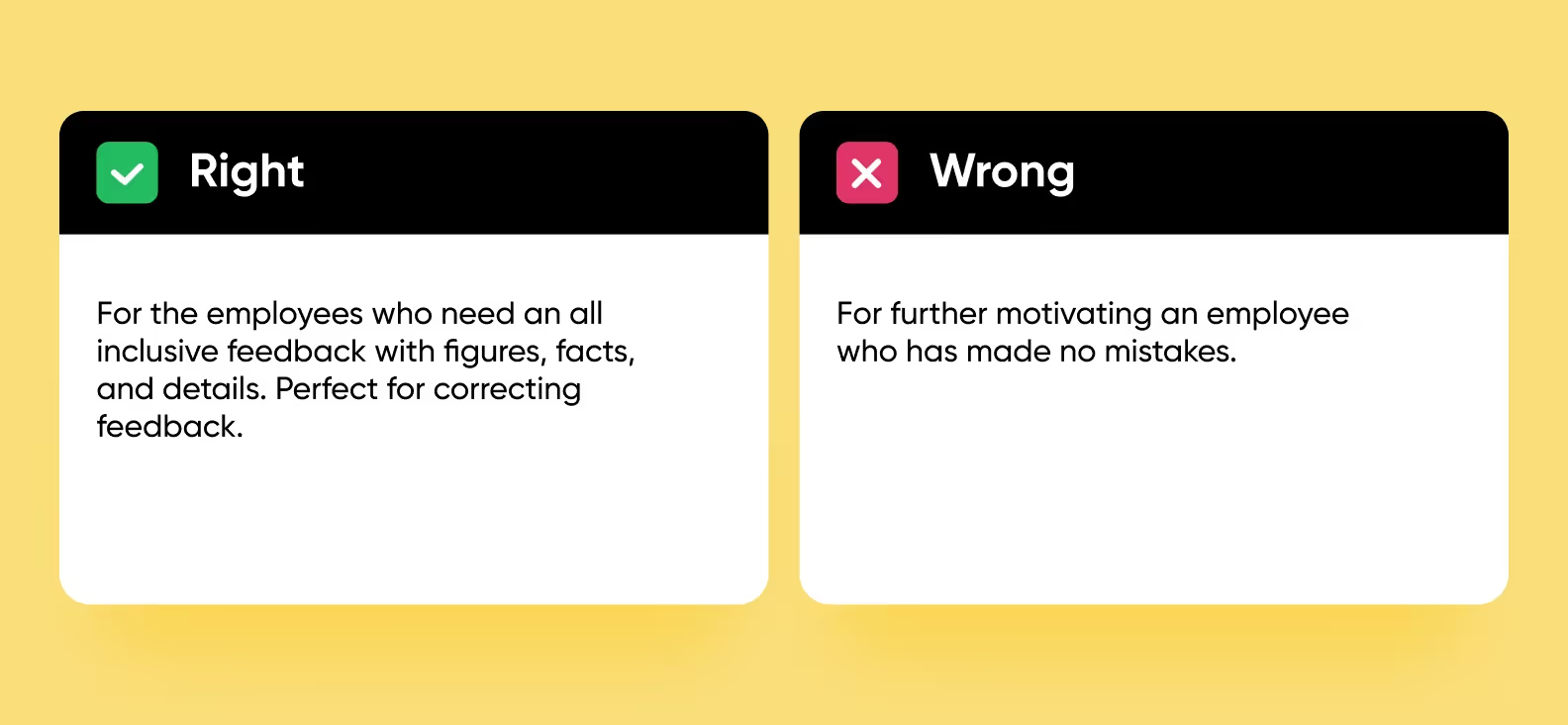

Standard: remind an employee about your team’s standards and why it is necessary to stick to them.
“Jack, our team has a rule: at the end of the day, everyone must make a git push as a backup measure to allow them not to lose access to the results. It is a must even if the task is not complete.”
Observation: tell them about the cases when the employee didn’t stick to the standards. The more specific your examples are, the better.
“You made only 3 git pushes in the last sprint. Thus, I see you don’t follow the rule.”
Result: explain how their actions affect personal and team performance.
“As a result, last Thursday, as you were away, no one could get your code. So, Tim had to restart your task, and we lost the result of an entire working day.”

It’s a coaching method that helps employees reflect on the tasks that worked well or poorly. Don’t tell your employees what’s right and wrong. Instead, help them analyze the situation on their own.
Problem: Discuss the challenging situations they have come across in their work.
“What hardships have emerged in your work? In what situations was it hard to make a decision?”
Action: analyze the employee’s actions to deal with the issue.
“What did you do to deal with the situation? To find a solution? Who did you ask for help? How did you act to overcome the hardships?”
Result: what your actions resulted in and why.
“What was your result? Do you think other actions could result in a different outcome?”
Learned: What conclusions can you make in this situation?
“What conclusions have you made in this situation? Evaluate the efficiency of your actions at different moments.”
Applied: How the employee’s behavior will change. What other situations this experience is relevant for.
“What will you do next time in a similar situation? In what other situations can you apply this experience?”

High-quality feedback is among the project manager’s duties but you can apply it in other professions as it helps build a trusting atmosphere in your team. It’s surely vital for your team to be able to accept the feedback but you have more chances to be understood if you think your feedback through beforehand.